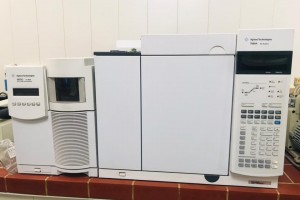
The College of Education for Pure Sciences at the University of Basra discussed a doctoral thesis on (preparation, diagnosis and analytical study of some new canine polymers)
The thesis submitted by the doctoral student (Iman Saad Ali) included the preparation and diagnosis of two types of chelated polymers (polyamides) containing groups of azomethane and thiourea to study their analytical efficiency in the treatment of water contaminated with heavy metals and their properties were studied and diagnosed using techniques (FT-IR 1HNMR, CNMR 13 technology, and CNMR 13). Thermal stability of both types of polymeric resins was evaluated using TGA technique The other part of this study included the preparation of magnetic iron oxide Fe3O4 by covalent deposition method and grafting it with the prepared resins, magnetic iron oxide and composite polymers were diagnosed by several techniques including microscopy In addition, it was diagnosed by XRD technique. In addition, the magnetic properties of iron oxide and harmful resins were studied, the zeta potential was measured, the surface area of BET was studied, and the adsorption of pollutants with heavy elements such as lead, cadmium, nickel, zinc, copper and iron was conducted. An analytical study of adsorption was conducted by Single meal using atomic absorption spectroscopy flaming
The study concluded that the process of producing these adsorbent surfaces and their applications is characterized by ease and appropriate cost in addition to the ease of separation as it has magnetic properties compared to other types of chemical processes - and it can, in principle, be used in the process of water purification and other separation processes and it is capable of reactivation with high efficiency
The study recommended conducting studies to test the possibility of adsorption of other pollutants such as dyes, hydrocarbons and other organic pollutants and to test the ability of these surfaces to adsorb drugs from their solutions.








